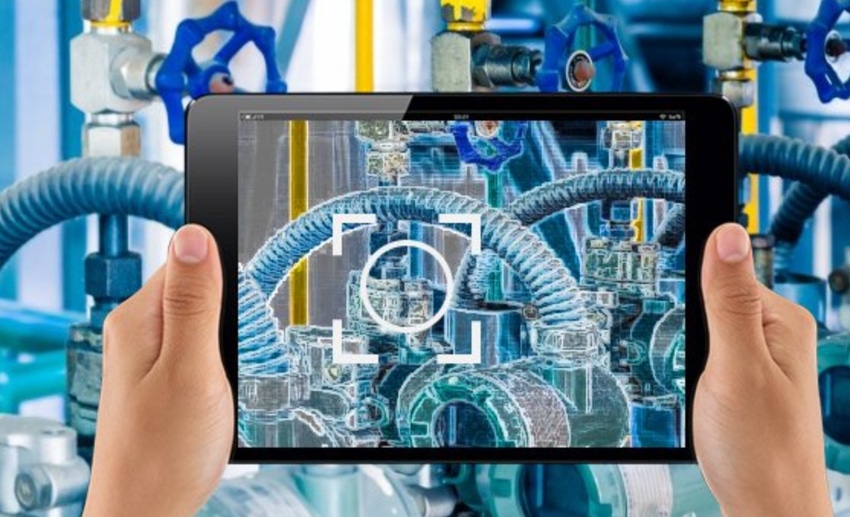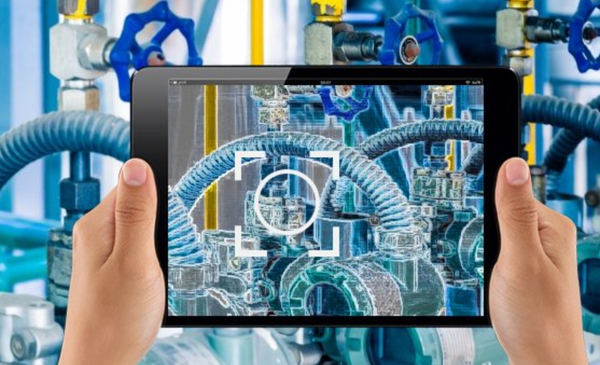Augmented reality (AR) and virtual reality (VR) tools can help manufacturers reduce personnel and cut down on onsite technical visits.
June 25, 2020

A recent survey of manufacturers shows that 56% of those polled said they have implemented some form of AR/VR technology into their organization over the last 12 months. Another 35% said they are considering doing so. More than a quarter, 27%, said they have fully deployed an AR/VR solution and are looking to scale further.

CAD visualization tools can help technicians remotely identify issues on the manufacturing line. The AR/VR tools can also show onside personal how to resolve manufacturing issues. (Image source: Grid Raster)
AR/VR platform company, Grid Raster, has released the results of the survey. The questions explore trends in how companies are using AR/VR. Roughly 215 responses were collected during the week of March 30 from C-level and technology executives of mid-level and enterprise-level manufacturers.
Grid Raster’s co-founder, Dijam Panigrahi, noted that the recent COVID-19 pandemic could push this number higher, since manufacturers are looking to implement more virtual design into their workflows to minimize human interaction on the production floor.
AR/VR Impact on Productivity
Nearly a third of all companies polled (29%) said they are realizing more than a 25% increase in productivity efficiency. Additionally, more than half (61%) said they are realizing as much as a 20% savings in costs as a result of leveraging AR/VR technologies.
As for where manufacturers are taking productivity savings, Panigrahi noted that training on the production line and the ability to remotely conduct repair and maintenance tasks constitute much of the savings. “Say you’re working on a production line and there is an issue. The field technician can see through the glasses and instruct the technician at the plant on how to fix the issue much more quickly than a physical visit,” Panigrahi told Design News.
A Breakdown of Where Companies are Leveraging AR/VR:
60% - Virtual Supplemental Labor on Production Lines
53% - Virtual Customer Service Visits
53% - Virtual Design & Engineering
26% - Employee Training Programs
Scalability Remains a Significant Challenge
Of those companies that have already implemented an AR/VR solution, 76% said they need the most help in scaling further to handle more projects. Another 71% said questions surrounding scalability is the leading reason why they have yet to launch an AR/VR solution.
For many manufacturers, scalability involves mixed platforms of AR and VR. “Manufacturers are overcoming this great challenge by partnering with providers of cloud-based – or remote server-based – mixed platforms powered by distributed cloud architecture and 3D vision-based AI,” said Panigrahi. “These mixed cloud platforms provide the desired performance and scalability to drive innovation in the industry at speed and scale.”
Rob Spiegel has covered automation and control for 19 years, 17 of them for Design News. Other topics he has covered include supply chain technology, alternative energy, and cyber security. For 10 years, he was owner and publisher of the food magazine Chile Pepper.
About the Author(s)
You May Also Like





